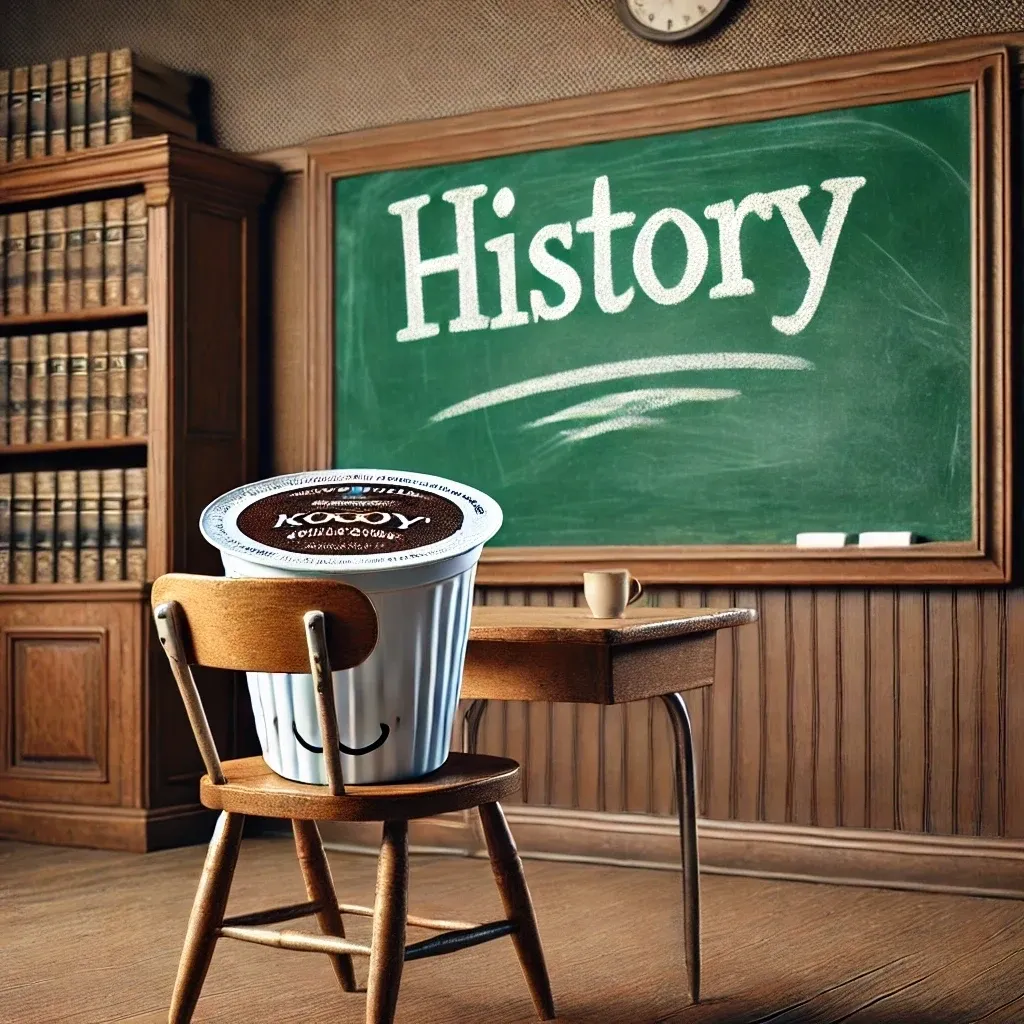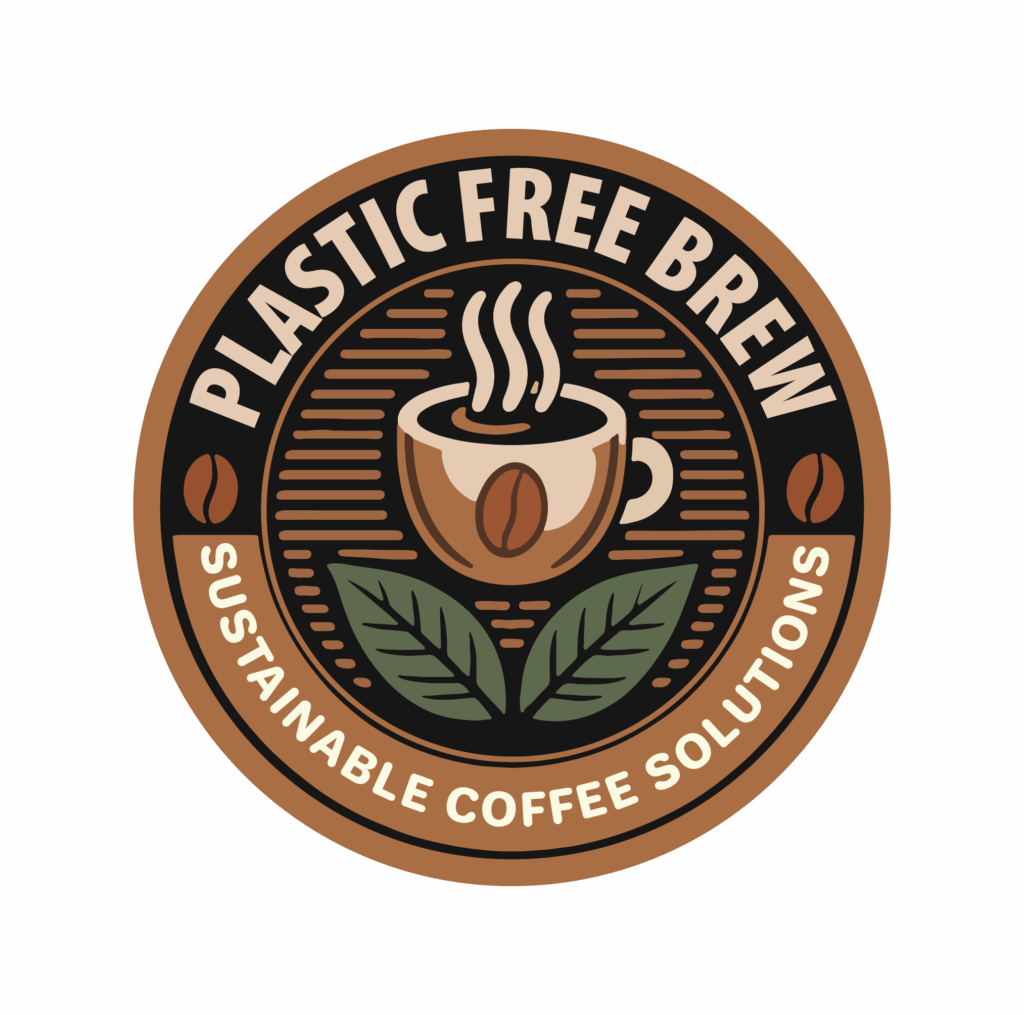
For centuries, coffee was brewed using natural, simple materials such as: ceramic, metal, and glass. But as the modern world embraced convenience, plastics infiltrated nearly every aspect of coffee brewing, from drip machines to single-use plastic pods. Today, we find ourselves facing the consequences of plastic dependence, microplastic contamination, waste, and environmental harm.
Lets take a journey through the history of coffee and its increasing reliance on plastic components, and explore how we can move toward a plastic-free future.
Pre-Plastic Era: Brewing Coffee with Natural Materials (Pre-1900s-1940s)
Before industrial manufacturing, coffee was brewed using time-tested methods and plastic-free materials:
15th-18th Century: Early Brewing Methods
· Ottoman Ibrik (15th Century) Copper or brass pots (still used today as the Turkish cezve).
· French Press (1852, Patented 1929) Originally glass with a metal plunger.
· Percolators (1800s) Metal brewing devices, commonly aluminum or stainless steel.
· Moka Pot (1933) Invented in Italy, made entirely of aluminum.
***No plastics were used in coffee brewing during this time.
The Rise of Plastic in Coffee Brewing (1950s-1990s)
Plastics became integrated into home coffee machines and instant coffee packaging, driven by the post-WWII boom in synthetic materials and mass production.
1954: The First Drip Coffee Machine (Wigomat, Germany)
· The first electric drip coffee maker replaced percolators.
· It still used glass and metal components, but plastic was introduced in handles and tubing.
1972: Mr. Coffee & the Household Plastic Revolution
· Mr. Coffee became the first widely available automatic drip coffee maker, revolutionizing home brewing.
· Plastic housing, plastic water reservoirs, and plastic tubing became standard.
· Plastic was chosen for cost-effectiveness, heat resistance, and mass production.
The Era of Disposable Coffee Cups & Lids (1980s 1990s)
Starbucks (1971) & Dunkin Donuts (1950 rebranded in 1960s) popularized takeaway coffee.
· Plastic lids, foam cups, and plastic-lined paper cups became the norm.
· Plastic started appearing in coffee filters, coffee packaging, and stirrers.
· By the 1990s, most home coffee brewers had plastic components, and disposable coffee culture was in full swing.
The Rise of Single-Use Plastic Pods (1998-Present)
The introduction of single-serve coffee pods took plastic dependence to a whole new level.
· 1998: Keurig Introduces the K-Cup
· The first K-Cups launched, introducing plastic coffee pods to millions of homes and offices.
· Each K-Cup contained plastic, aluminum, and coffee grounds designed for convenience, but not sustainability.
2000s-2010s: Coffee Pod Explosion
· Keurig and Nespresso dominated the market, producing billions of plastic pods annually.
· By 2015, over 9 billion K-Cups had been sold most ending up in landfills.
· Despite consumer backlash, plastic remained the industry standard.
2019-Present: The Microplastic Discovery in Coffee
· Studies revealed that heating plastic coffee pods can leach microplastics and chemicals into brewed coffee. https://www.nist.gov/news-events/news/2022/04/nist-study-shows-everyday-plastic-products-release-trillions-microscopic
· Consumers became increasingly aware of health risks and environmental concerns.
· Plastic went from a “modern convenience†to a major environmental and health problem.
The Future: Moving Away from Plastic in Coffee (2020s & Beyond)
With rising concerns about plastic waste, pollution, and health risks, the coffee industry is shifting toward plastic-free solutions.
· 2020s: The Rise of Plastic-Free Coffee Pods & Brewing Equipment
· Consumers are starting to ween off the petroleum based plastic pods, and companies like PlasticFreeBrew are leading the way with 100% compostable, plastic-free coffee pods.
· Glass and stainless steel manual brewing methods (French Press, Pour Over, Espresso Machines) are making a comeback.
· Reusable stainless steel or biodegradable filters are replacing plastic-based coffee filters.
· Brands are removing plastic linings from takeaway cups and packaging.
· The future of coffee is about reducing plastic, embracing natural materials, and prioritizing sustainability.
The Plan: Moving Away from Plastic Dependence in Coffee
If we want to reverse decades of plastic dependence, we need a step-by-step approach to a plastic-free coffee culture:
Step 1: If you are a pod drinker, choose a new method or switch to Plastic-Free Coffee Pods
Step 2: Use Plastic-Free Brewing Equipment
· French Press (Glass & Stainless Steel)
· Pour-Over Coffee Makers (Glass & Ceramic)
· Espresso Machines with Stainless Steel Boilers
Step 3: Reduce Disposable Plastics in Coffee Culture
· Bring a reusable coffee cup (stainless steel, glass).
· Use a compostable wooden stirrer or just swirl your coffee.
· Support small local cafes with plastic-free initiatives.
Step 4: Demand Change from Coffee Companies
· Choose brands that prioritize sustainability
· Look for B-Corp certified or Fair Trade companies committed to ethical sourcing.
· Encourage companies to invest in plastic-free alternatives.
Final Thought: A Plastic-Free Future is Possible
Plastic became a dominant force in coffee brewing because of cost-cutting and convenience, but it came at a steep environmental and health cost.
We now have the knowledge, technology, and consumer demand to reverse this trend.
At PlasticFreeBrew, we believe coffee should be bold, clean, and plastic-free. The future of coffee isn’t plastic. It’s sustainable. It’s natural. It will taste better and be better for you.
